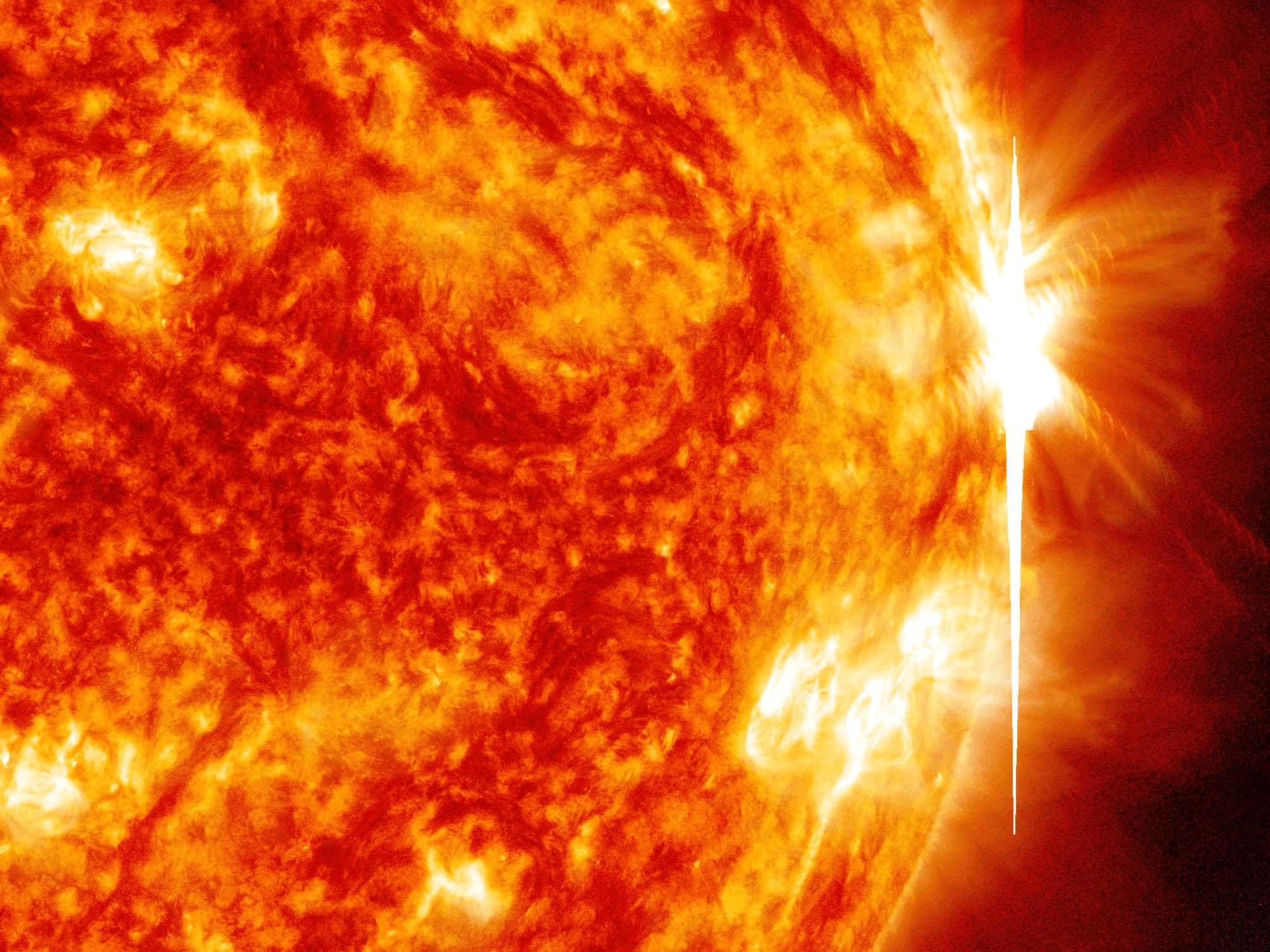Solar physicists categorize X-class solar flares into three groups: C, M, and X, with X being the most powerful.

An X-class solar flare was observed today, December 14, by NASA’s Solar Dynamics Observatory spacecraft
This particular outburst at 12:02 p.m. EST (1702 GMT) registered as an X2.8, marking it as the most potent X-class solar flare since September 2017, as reported by SpaceWeather.com. Accompanying these powerful X-class solar flares are often coronal mass ejections (CMEs), sending massive clouds of solar plasma hurtling into space at incredible speeds. Initial assessments suggest that this X-class solar flare was associated with a CME, potentially having an impact on Earth. The US Air Force noted a Type II solar radio burst, usually originating from a CME’s leading edge. The predicted velocity of the emerging CME could exceed 2,100 km/s (4.7 million mph).
CMEs hitting Earth can trigger geomagnetic storms, which have the potential to disrupt power grids and infrastructure while intensifying the spectacle of auroras, making them visible across larger areas
Although Earth’s atmosphere shields us from the harmful radiation of X-class solar flares, their effects can still be felt. These disruptions include interference with GPS signals, communication satellites, and radio blackouts, as exemplified by today’s deep shortwave radio blackout over the Americas.
The recent X-class solar flare activity may hint at more to come, signaling an increase in the sun’s activity. Solar cycles typically last 11 years, and the U.S. National Oceanic and Atmospheric Administration predicts that Solar Cycle 25 will reach its peak between January and October of the following year. This prediction suggests a potential rise in solar events shortly.
READ ALSO: China Marks 500th Long March Rocket Launch With Successful Deployment Of Yaogan-39 Satellites




